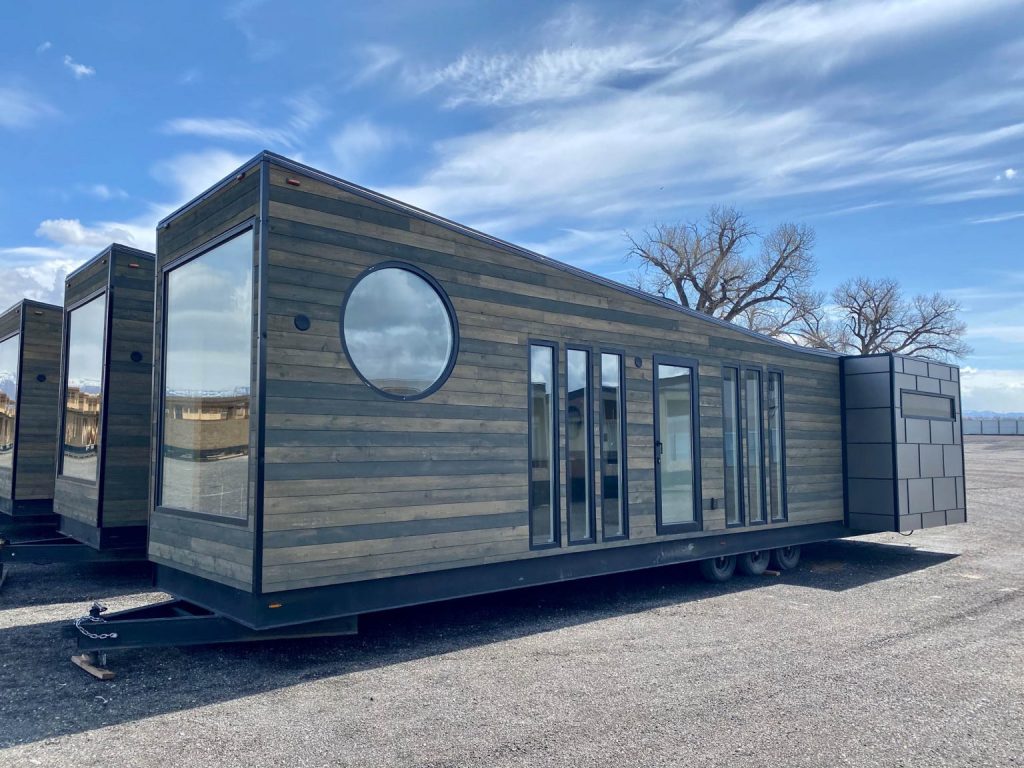Winterizing a tiny home is essential to keep it comfortable, energy-efficient, and safe during the colder months. Here are the proper steps and things to consider when winterizing a tiny home.

Insulate the walls, roof, and floor:
· Ensure your tiny home is well-insulated to prevent heat loss. Use high-quality insulation materials like spray foam or rigid foam boards.
· Pay close attention to areas prone to drafts, such as windows and doors.
Seal gaps and cracks:
· Check for any gaps or cracks in the exterior of your tiny home, including around windows, doors, and utility penetrations. Seal them with caulk or weatherstripping.
Weatherproof doors:
· Install weatherstripping around doors to prevent drafts. Consider adding a door sweep to keep cold air out.
Skirt the foundation:
· If your tiny home is on wheels or has an exposed undercarriage, consider skirting it with insulated panels to prevent cold air from circulating beneath the house.
Roof and gutter maintenance:
· Ensure the roof is in good condition and repair any leaks. Clean gutters to prevent ice dams and water damage.
Protect pipes and plumbing:
· Insulate water pipes to prevent freezing. You may need to use heat tape or electric pipe insulation in extremely cold climates.
· Drain or bypass outdoor hoses and faucets.
Use a heating source:
· Install a reliable heating system that suits the size of your tiny home, such as a propane or electric heater. Consider a wood-burning stove if you have the space and ventilation for it.
Prepare the interior:
· Ensure that your tiny home is adequately furnished with warm bedding, rugs, and curtains to trap heat.
· Use draft stoppers at the base of doors to reduce heat loss.
Monitor moisture:
· Proper ventilation is essential to prevent condensation and moisture buildup inside your tiny home. Invest in a dehumidifier if needed.
Prepare for power outages:
· Have a backup power source, such as a generator or solar panels with battery storage, in case of power outages during winter storms.
Winterize the exterior:
· Remove leaves and debris from the gutters.
· Cover or store outdoor furniture and equipment.
· Keep a supply of ice melt or sand for pathways and steps.
Emergency supplies:
· Stock up on essential supplies like non-perishable food, water, flashlights, and extra blankets in case of emergencies.
Monitor propane and fuel:
· If you’re using propane for heating or cooking, ensure you have enough fuel and regularly check for leaks.
Consider mobility:
· If your tiny home is on wheels, plan for mobility in case of severe weather or if you need to relocate temporarily.
Maintain your home:
· Regularly inspect and maintain your tiny home to catch any issues before they become significant problems.
Learn about local regulations:
· Be aware of local building and safety regulations, as well as any specific requirements for winterizing tiny homes in your area. By following these steps and considering your specific climate and location, you can ensure that your tiny home is properly winterized and ready to withstand the challenges of the cold season.

